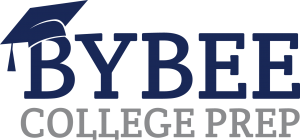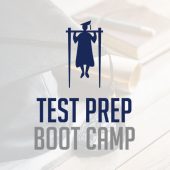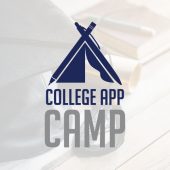Stretch, Target, Safety Schools: How to Build a Smart College List
When your child starts the college search, you’ll quickly hear terms like stretch, target, and safety schools. These categories are more than just buzzwords—they’re essential tools for creating a balanced college list that leads to real options and less stress when admissions decisions roll in.
But what do these labels actually mean? And how can you, as a parent, help your student apply them correctly?
Let’s break it down.
Not sure how to tell if a school is a stretch, target, or safety? We’ve created a simple tool to help.
👉 [Download our free College Categorization Checklist (PDF)] and take the guesswork out of building a balanced college list.
It’s About Fit and Selectivity—Not Rankings
First, it’s important to understand that whether a college is considered a stretch, target, or safety has nothing to do with prestige. The same school could be a stretch for one student and a safety for another.
These categories depend on two main factors:
-
How your student’s academic profile compares to the school’s admitted students.
-
How selective the school is overall.
A smart college list includes a mix of all three types—because even top students can’t predict outcomes at certain schools.
 What Is a Stretch School?
What Is a Stretch School?
A stretch school (sometimes called a “reach”) is one where admission is uncertain, even if your child is a strong applicant.
Here’s when a school falls into this category:
-
Academic Fit:
Your child’s GPA and test scores are within the school’s middle 50% range but below the median. -
Highly Selective Admissions:
Some colleges are so competitive that everyone faces long odds, regardless of qualifications. Schools like Harvard, Stanford, and other elite institutions admit fewer than 5% of applicants. Even if your child checks every box, factors outside their control—like institutional priorities or sheer volume of applicants—play a big role.
Example:
A student with a 3.9 GPA and strong extracurriculars applying to a school with a 7% acceptance rate is still looking at a stretch, no matter how impressive their résumé.
What Is a Target School?
A target school is where your student is well-positioned for acceptance.
-
Academic Fit:
Their GPA and test scores are above the median for admitted students. -
Selectivity:
The school admits a reasonable percentage of applicants, making decisions more predictable if your student presents a solid overall application.
These are schools where your child should feel confident but not guaranteed—because admissions always carry some uncertainty.
Example:
If a college typically admits students with GPAs around 3.6, and your child has a 3.8 with strong supporting materials, that’s likely a target school.
What Is a Safety School?
A safety school is one where your child is very likely to be admitted based on their academic profile.
-
Their GPA, test scores, and coursework are well above the average admitted student.
-
The school’s acceptance rate is high enough to minimize surprises.
-
Importantly, it should also be a financial safety—affordable even without significant scholarships.
But here’s the part many families overlook: A safety school should never feel like a “backup you hope you don’t need.” It should be a college your child would be excited to attend.
excited to attend.
With close to 4,000 public and private non-profit colleges in the U.S., there are countless options where students can thrive academically and socially. Many safety schools offer:
-
Honors programs.
-
Merit-based scholarships.
-
Strong career placement and alumni networks.
Encourage your child to view safety schools as opportunities, not compromises.
How to Help Your Student Categorize Colleges Correctly
As a parent, you can play a key role by guiding research and keeping expectations realistic. Here’s how:
-
Use Reliable Data:
Start with tools like College Navigator to review each school’s admission statistics, including GPA and test score ranges, acceptance rates, and program offerings. -
Understand Holistic Admissions:
Many schools look beyond numbers. Essays, recommendations, extracurriculars, and demonstrated interest can influence outcomes—especially at selective institutions. -
Consider Financial Fit:
A true safety school is one that’s affordable. Use net price calculators on college websites to estimate costs after aid. -
Focus on Fit Over Fame:
Remind your child that success isn’t tied to a school’s ranking but to how well a college matches their academic goals, interests, and personality.
Sample College List Breakdown
A balanced college list typically includes:
-
2-3 Stretch Schools
-
3-4 Target Schools
-
2-3 Safety Schools
This mix ensures that when decision season arrives, your student has real choices—including schools they’re enthusiastic about.
📄 Free Resource: College Categorization Checklist
Building a smart college list starts with knowing where each school stands.
Click here to download our free PDF checklist—the same tool we use with families to simplify the process of identifying stretch, target, and safety schools.
No forms. No hassle. Just helpful guidance for your college search.
Final Thoughts: Setting Up for Success
Understanding the difference between stretch, target, and safety schools can make the college application process less stressful and more strategic. As a parent, your role is to encourage thoughtful choices—ensuring every school on the list is one where your child can succeed and be happy.
A balanced list isn’t about lowering expectations—it’s about maximizing opportunities.
Need Help Building a Smart College List?
Understanding stretch, target, and safety schools is just the first step. If you want personalized guidance to ensure your student’s college list is balanced, strategic, and tailored to their goals, we’re here to help.
📅 Schedule a free introductory consultation with Bybee College Prep. We’ll walk you through how we can support your family through every stage of the college admissions process.
➡️ Book your free consultation here
Give your student the confidence of knowing they’re on the right path—with options they’ll be excited about.









